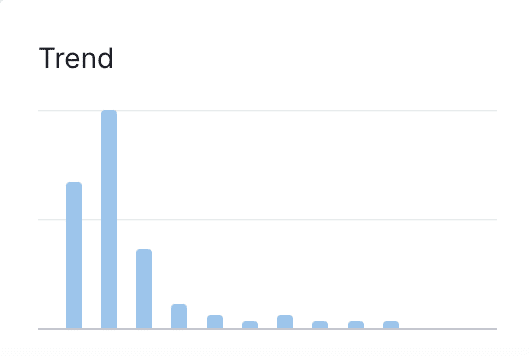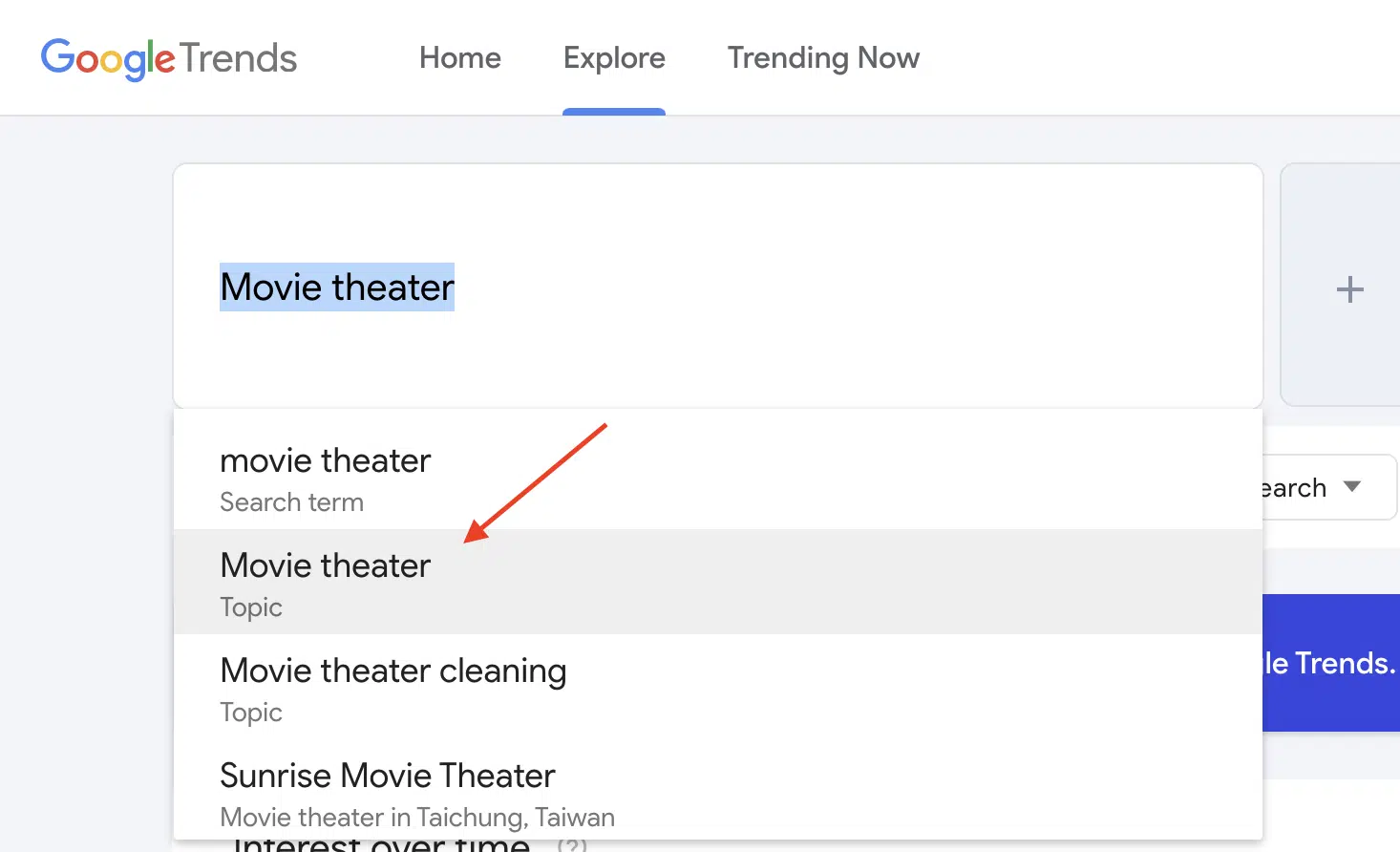Have you ever seen your traffic decline over time despite your top keywords ranking in Position 1? I have, and it’s the worst feeling.
It might feel like Google is punishing you for being successful, but that’s not the case.
Google doesn’t know you, but they do know users. And if your work is ranking in the top positions, but traffic continues to decline, it might not be your fault.
Here’s what you can do to revitalize your website’s traffic.
How to investigate traffic drops when rankings are solid
Your stakeholders are breathing down your neck and pressuring you for answers. Don’t panic, take a breath.
While you may not be able to magically bring users back to your site in an hour, you can at least do some quick research to figure out why.
An easy first step is to check search trends. This should be your very first step.
Check keyword trends from SEO tools
Most SEO research tools now have search volume interest over time. Here are some examples from Semrush.
Keyword: ‘best cars of 2022’
You would naturally expect a strong drop-off for most “2022” keywords once January 2023 arrives.

Let’s try something less stuck in the past and more evergreen.
Keyword: ‘movie theaters near me’
Now, this is an interesting topic. Here, we can see a spike around August and September, followed by a dropoff.
Barbie and Oppenheimer both came out in late July, maintaining popularity throughout those months.


Let’s say you’re the SEO for a major movie theater brand, and you say, “Hey John, this is normal seasonal behavior for movie theaters. My problem is that my boss complains that traffic has declined for years and we can’t figure out why.”
To zoom out even further, we need to use Google Trends.
Check Google Trends
This tool can sometimes lead us to helpful clues on cultural impact for search terms.
Now it’s important to quickly note the difference between search terms and topics in Google Trends. Here’s an oversimplified explanation:
- Search terms are simply keywords or search queries.
- Topics are entities that may encompass multiple search terms.
Now let’s type “movie theaters” and select Topic so that we get a better view of the landscape.


Before we move on, note that “Movie theater cleaning” as a topic follows closely after our main topic. That’s important for later. Don’t forget!
OK, let’s also change the date range to the longest option, 2004 – Present.


See that huge drop around Q2 of 2020? What happened then?
That’s when the world shut down for one of the most significant pandemics in history. That explains why traffic tanked then.
This also explains why movie theater cleaning was another hot topic in Google Trends.
But the pandemic is over. COVID is still around, but things are back open. Why hasn’t search interest returned?
Streaming services like HBO Max and Disney got innovative and started working directly with film production companies to allow streaming theatrical releases during this time. That trend has since slowed down but hasn’t brought demand back to peak levels.
But what about that huge peak before 2020? Marvel movies. That was a unique time for movie theaters where Marvel created a demand.
So what do we do about it? We can’t all be Marvel and bring people to our sites with Robert Downey Jr., but I’ll dive into some tactics later in this article.
Check new SERP features
Some keyword tracking tools have a cool metric that tracks how many pixels from the top your result is. Looking at the delta on that metric can be a clear indicator that some new SERP features may be hurting your organic CTR.
This can be frustrating, especially since Google constantly tests new ones, so you never know how long they’ll actually stick around.
Get the daily newsletter search marketers rely on.
What to do when search volume changes
SEO is only as good as your product and people’s interest in it.
So, if interest is dwindling, we need to get creative and try something else.
Get social
While working in the behavioral health space before and during COVID, I found something interesting: the increase in interest in virtual therapy and psychiatry.
My clients were fortunate enough to invest in it before the pandemic, but how did our audience know to search for it?
I did some research and found that during the early days of the pandemic, behavioral health professionals were going to Instagram and TikTok to share helpful information about how to handle depression during the lockdown. They also happened to be plugging their telehealth services.
That started a chain reaction of more and more professionals plugging telehealth as an option, spreading like wildfire.
Social media has a huge impact on search demand. Sometimes, it’s short-lived; other times, it can bring back demand.
So, if you’re a struggling movie theater chain, you can use social media to bring people back to the theaters. But you have to do it creatively. Give them a reason why they shouldn’t wait for streaming.
Go old school with above-the-line ads
If you have the budget, you can work with your marketing department to invest in traditional advertising, specifically above-the-line advertising. Think TV commercials, streaming ads, radio ads, and magazine ads.
Digital has changed the advertising landscape, but traditional advertising can still help influence certain demographics. The key is determining where your audience spends their time and seeing if advertising opportunities exist.
In B2B? Try below-the-line strategies
Above-the-line strategies may not work for you if you’re in B2B. In this case, you’ll need to pursue below-the-line strategies. Think trade shows, direct mailers, conferences, etc.
Sometimes, your audience may not know what to search for or know they need your services. You need to get in front of them and show them.
What to do when new SERP features appear
As previously mentioned, this can be one of the more complex signs of traffic drops.
Often, our stakeholders may not accept that something is out of your control and will ask you to make magic happen. So what can we do?
Discover how the SERP features work
If you’re determined to regain click share in the SERPs, you’ll want to rank for any of these new SERP features. So, figure out how they work!
SERP features typically rely on content structure or schema markup to find the right pages to show. Find out who’s ranking in those features and look for commonalities between them. See if it’s something you can quickly implement.
Be patient
I hate to say this, but sometimes, no action is the best action. SERP features come and go all the time.
You’ll need to go with your gut and decide if it’s worth the time and money to rank in these new features or if you think it’s just a test and will pass with time.
Is it permanent or cyclical?
We need to be the ones to determine if traffic declines are a permanent effect of our niche or if it may be a cyclical event.
In the case of movie theaters, it’s entirely possible that a new franchise or experience in the theater business could come about and bring audiences back to the big screen.
But if you’re in the CD sales business, I’m sorry you may need to find a new line of work. It’s unlikely that CDs will have the same revitalization as vinyl.
Use the tools at hand to analyze audience behavior and see if there’s something you can do outside of your SEO scope to bring back that search demand.
Opinions expressed in this article are those of the guest author and not necessarily Search Engine Land. Staff authors are listed here.








